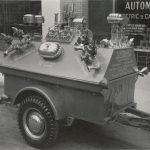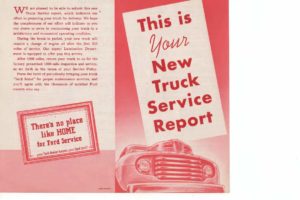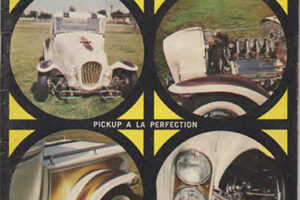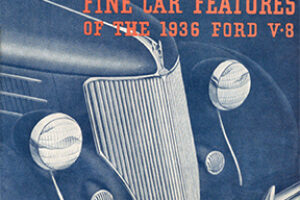Update: This article was given to my by Tony Barron and The Flat-Spot received his permission to share it. It was written by Tony Barron.
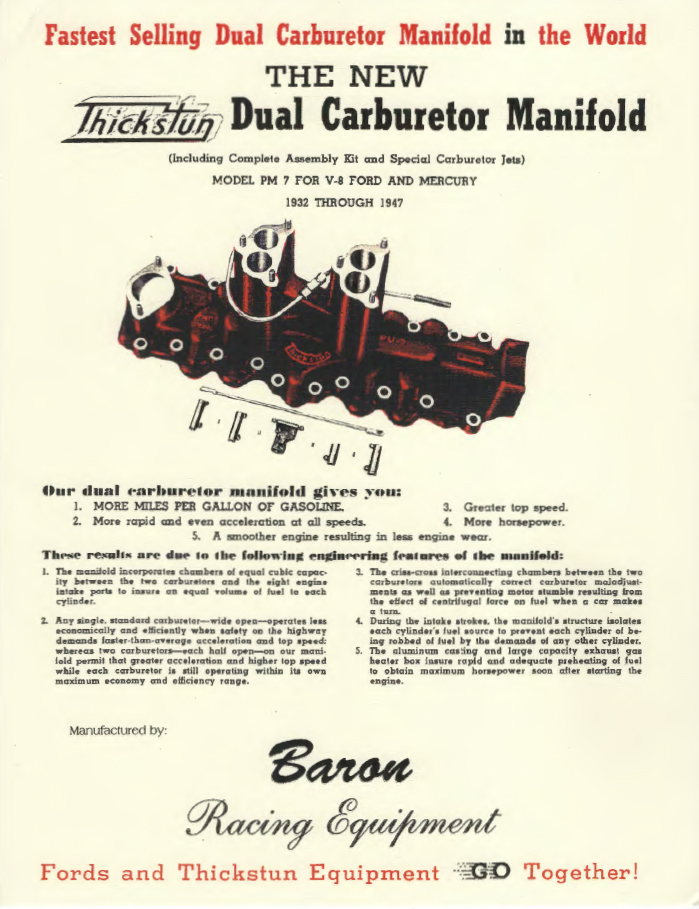
Frank Baron moved to Los Angeles at the age of 9 in 1920. His father owned a popular barber shop on Pico Blvd., West of La Brea. Harry Miller would come in for a hair cut and shave and give young Frank free tickets to various tracks around L.A. at the time.
The sound and smell of the fronty Fords and screaming Millers would forever be embedded into his first memories of race engines.
At the age of twelve, Frank would get his first Model T coupe which would shortly get chopped and a Rajo O.H.V. head installed.
During high school auto shop, at Beverly Hills High, Frank continued his love of cars and also got to meet the likes of Bob Estees.
Upon graduation in 1928, Frank began working for another L.A. notable, Mark C. Bloom. This would be around 3rd and La Brea Blvd. A couple of times Frank would be seen pumping gas and checking “out” under the hood of Clark Gable’s Duesendburg after hours during graveyard shift.
After a short period at Blooms, Frank started working at Fahy Ford Dealership where he would meet Tommy Thickstun. At this time Frank and Tommy began to talk and compare notes on improving the Ford V-8’s breathing.
In around 1937, Frank would open his first shop, Baron’s Automotive Service, on West 8th Street. This became a regular hang-out for Tommy Thickstun and other Hot Rodders, Frank Palmer and of course Bob Tattersfield.
Frank Baron and Tommy Thickstun collaborated on the idea of compression versus breathing for the Ford V-8. Up to this time, most all Rodders would raise compression because this was the simplest way to gain horse power, without major engine work. They even fabricated a four carb manifold, which ended up on a Bob Estees Roadster at the Dry Lakes (Muroc).
During this same period Tommy started producing his first line of speed equipment. During the pre-war period, many records were set with Thickstun’s Dual 180 degree manifolds, which many old-timers consider the best dual manifold ever produced. Many would copy it, but he was the first to understand the concept of 180° firing, and at the same time his cylinder heads and marine splash covers would gain much attention.
Tommy Thickstun died in 1946 while vacationing with Frank Baron and friends at Lake Elsinore. He was to be remarried one week later. He was only 34 years old.
Many years later, Frank Baron remarked, when Tommy talked about various concepts new at the time, everyone listened. Frank recalled driving up Venice Blvd. in front of his new shop at a ‘fast’ rate of speed while Tommy was checking out vacuum and pressure gauges on their roadster. It was equipped with a new roots blower being developed by himself and Carburetor and Electric Engineering (Tattersfield). Frank remarked that Thickstun had the intellect of another mentor, Ed Winfield.
Now that the war years were behind , Frank and Bob Tattersfield would lay the foundation for a complete new line of racing equipment. Bob Tattersfield and his father already had a fine line of dual manifolds and cylinder heads, but not a racing-only line.
Development during early 1946-1948 would produce a complete package that would power some of the most powerful flathead (no nitro), of that era. Concepts, and ideas of Thickstun, Baron and Tattersfield began testing prior and during the war would begin to materialize now.
Pop-up pistons 7 /16 would be raised above the block, not only to raise compression, but at the same time, enlarge the transfer area. Intake valves would be increased to 1-3/4 and exhaust valves to 1-5/8 using these special heads. This made the need for four carburetors a necessity. Many people called this over-carbureation. When Frank approached Ed Winfield regarding camshafts for this “combination”, he remarked, “that set-up should work very nicely with one of my cams”.
Most manufacturers were still making only 2 and 3 car manifolds and cylinder heads Development was nothing more than a redesigned Ford Denver head with more compression and most still used small valve diameters. The Tattersfield-Baron four carb would incorporate 180° port arrangement with one venturi per cylinder to insure complete cylinder filling. Other manufacturers would not build their own Four carb manifold until well into the ‘SO’s. Others would also make cylinder heads with pop-up pistons such as 3/16 to 1 /4, but none like the Baron design.
It was during this time that Bob Tattersfield, with the help from Bill Burke, would build the Tattersfield-Baron special belly tank, showing off their new line of racing equipment.
Bob would enter the first Bonneville Nationals Meet with a speed of 140+. It was rumored that the Thickstun Roots Supercharger was even installed, but time ran out and only a few runs were made, according to Bob Morton, an Ansen mechanic.
John Browning would run Tattersfield-Baron combination that week with a speed of 140, making it the fastest Highboy Roadster at Bonneville’s first ever speed week. Others running Tattersfield-Baron equipment along with his own was Lou Senter of Ansen Automotive.
Lou Baney running a Frank Baron built engine captured 10 first place finishes out of 11 Lake Meets, in coupe classes and had the first coupe to run 125-130-135, with a top speed of 143 at the end of 1949.
Robert Morton, Ansen employee and engine builder, stated that the speed equipment wars continued through 1949-1950. One of his engines would also run in the Tattersfield-Baron Tan.k at a speed of 146 at El Mirage.
The late Bob Robinson, ran a qualifying speed of 145.16, in May 1950 running a “C” Roadster class Rubio and Morton, in the Ansen Special. Later that day it was to become the first stock body roadster to run over 151.00 at the Lakes, using Tattersfield-BaronAnsen equipment.
Bob Morton’s Ansen Special Roadster would dominate drag racing in 1950 at the Santa Ana Drags, at over 120 in the quarter mile.
Tattersfield-Baron Equipment continued to get exposure, the track roadster of John Kelly and Robert Falcon, with Bill Stevens driving in A.S.C., winning many races. Also very popular at the circle tracks, were Lou Senter’s sprint cars running the Tattersfield-BaronAnsen equipped engines.
Boat racing, being very popular in California, was a natural for Frank Baron. He began running a class 135 Hydro against the likes of Eddie and Bud Meyer and Richard Hallett in the early 1940′ s, at Marine Stadium. In 1949-50, owner, Frank Baron and co-pilots, Lou Baney and George Baldie, ran the fastest Cracker Box, “Lets Go”, boasting a 235 H.P., 239. cu. in. flathead engine on alky.
Frank Baron and Bob Tattersfield ended their business relationship around 1951-52, when Carburetor and Electric Engineering concentrated mostly with aircraft production, due to the Korean war.
Frank continued selling some manifolds and cylinder heads under his own name into the mid-fifties. Ansen continued with some of the Tattersfield components.
Frank Baron stated that with the advent of nitro and overhead valve engines, a good breathing flathead on alky didn’t stand a chance. Barney Navarro also noted this in a 1950’s issue of Hot Rod Magazine in an article on special fuels.
Frank Baron continued through the ‘SO’s and late ’60’s, with his son Tony, and Julius Kushner at both their Studio City Shop and Miracle Mile Service Center.
At this time, Frank began a program of developing a Paxton Supercharger Kit, which would propel a ’63 XKE Jaquar to quarter-mile speed of 115 and 13.50 E.T.S. at San Fernando Drag Strip.
Frank passed a way in April 1991, and his son, Tony continues to build a very fine line of speed equipment in the tradition originated by his father, Tommy Thickstun and Bob Tattersfield.
Nearly 50 years after the first Tattersfield-Baron special tank was introduced, Tony Baron ran over 200 m.p.h. with his new equipment at Bonneville 1995, with a record of 199.041. A second Lakester (Baron-Williams), is being built and will hopefully run at Bonneville’s 50th year anniversary. The new Lakester will debut at the Muroc reunion in 1998. The car is still equipped with a Ford Flathead engine.

Thickstun Supercharger
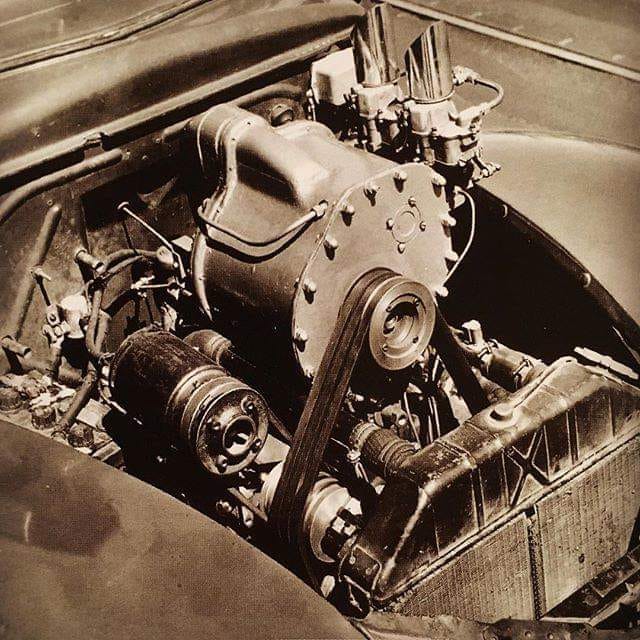
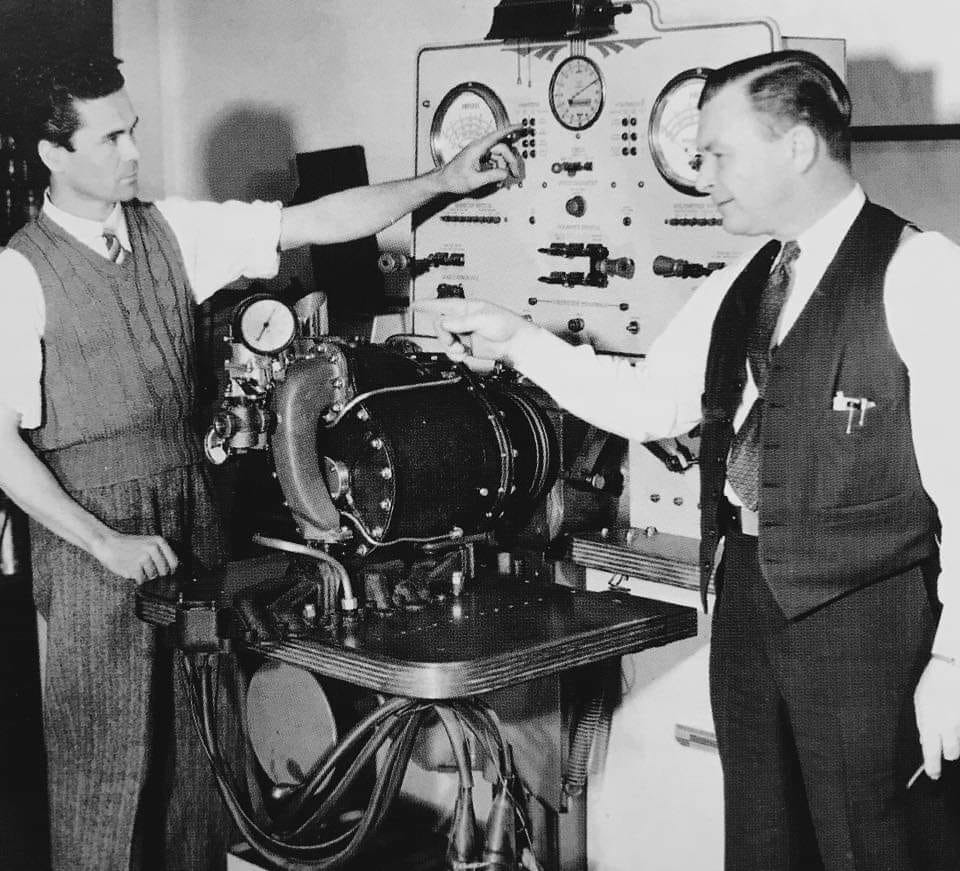
Status: No longer in production


Pre-War Thickstun PM-6 Lowrise
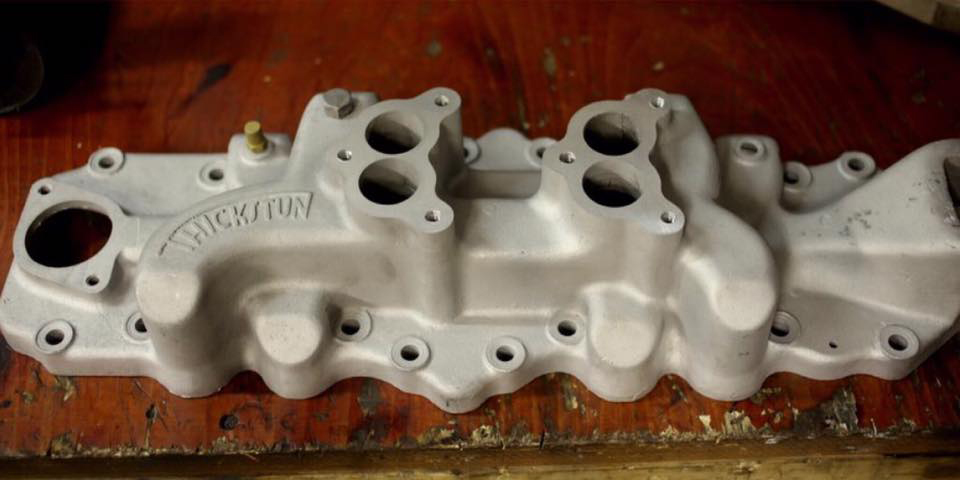
Status: No longer in production.

Few know that the PM-6 which was produced before WW2 and also came in a low-rise model as shown here. This intake was rumored to have been sold to Lee Chapel after Tom’s death and was later reproduced at by Lee’s Speed Shop and branded as the Tornado.

Thickstun P-1391
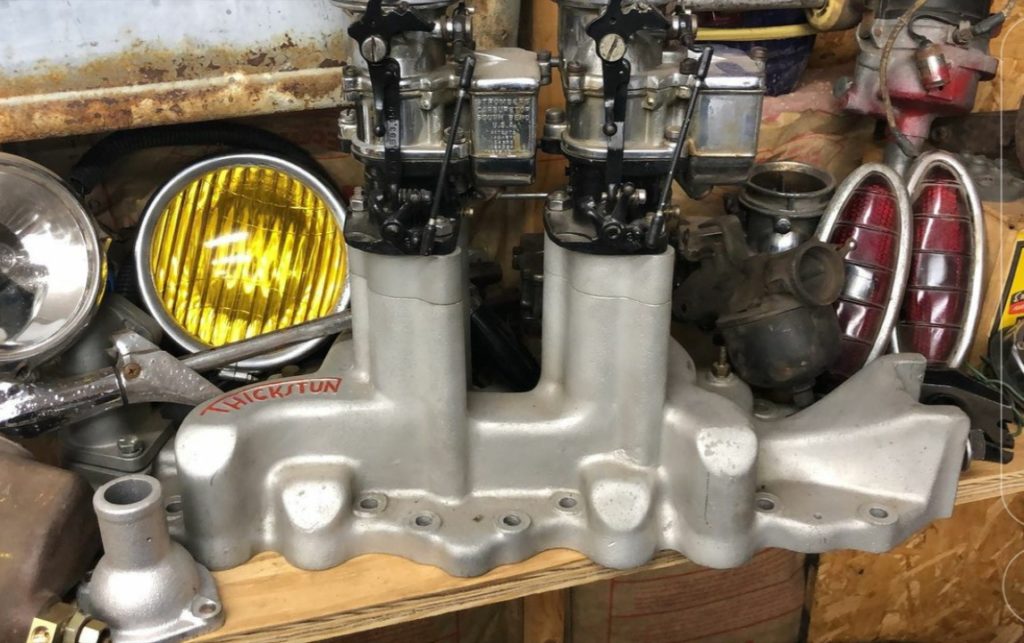
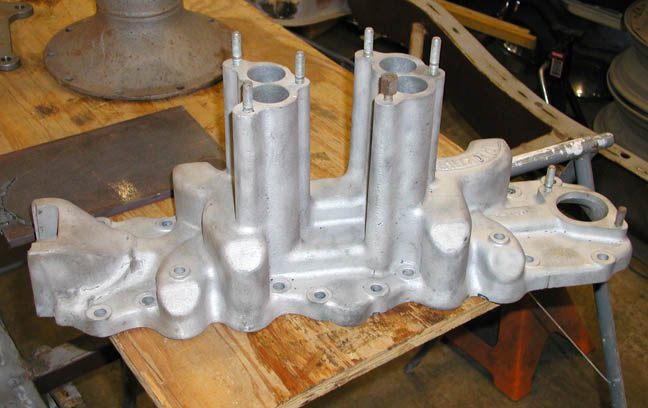
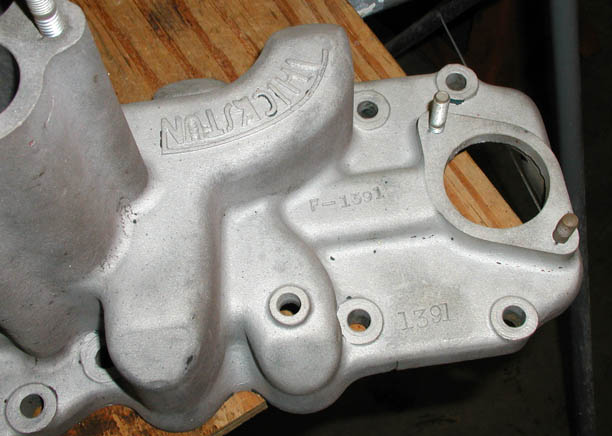
Status: No longer in production

This intake was designed and produced by Thickstun pre and during WW2. It was unclear if any where made after Tattersfield took over Electric & Carburetor Engineering Co. I was told by Tony Barron that this intake was designed for use in police vehicles. But most departments would cut off the high rise stacks. So finding a complete intake like the one shown is quite rare. The first image is off one that was cut down. It uses a set of extensions to get it back to it’s original height.
Electric and Carburetor Eng. Co. v860 Intake

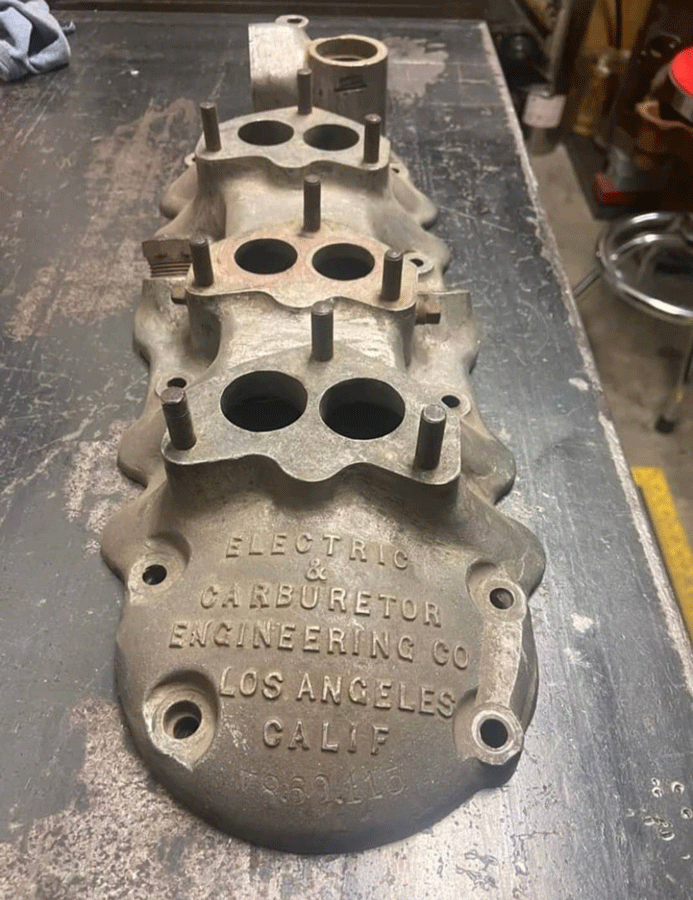
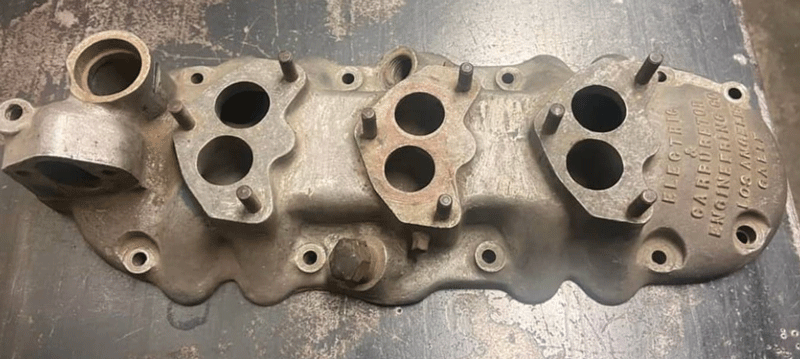

Status: No longer in production
This intake was designed and produced by Frank Barron and Tommy Tattersfield for the V860 when working for Barron at The Electric and Carburetor Engineering Co in LA pre WW2. These are some of the first intakes Baron and Tattersfield produced. anything with the C.E name is worth a great deal to collectors. As the use was short lived and each designer quickly branched off and started designing under their own brand.
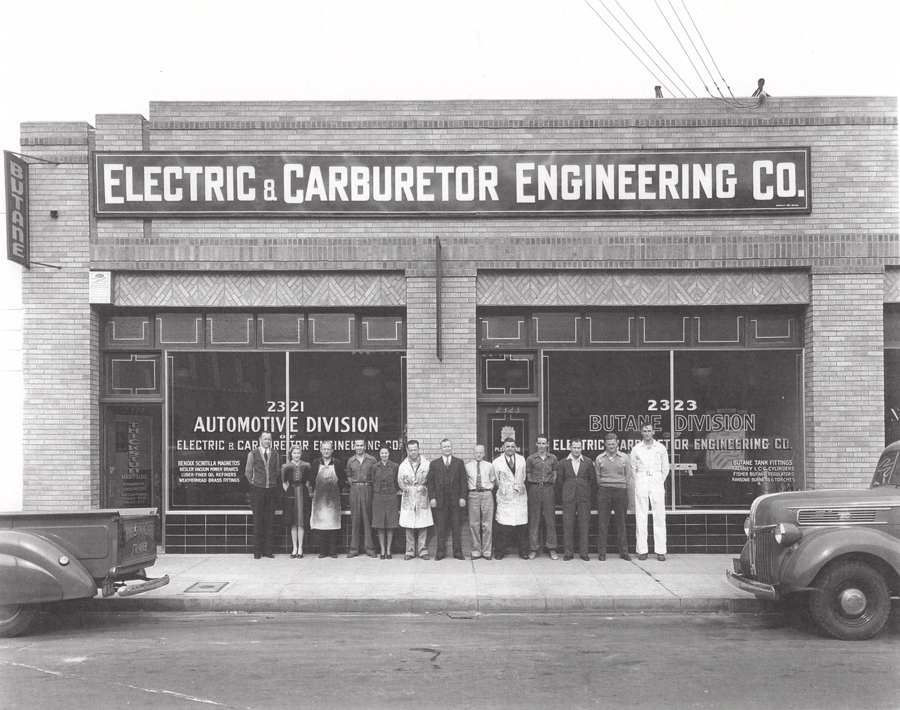
Tattersfield Propane Intake

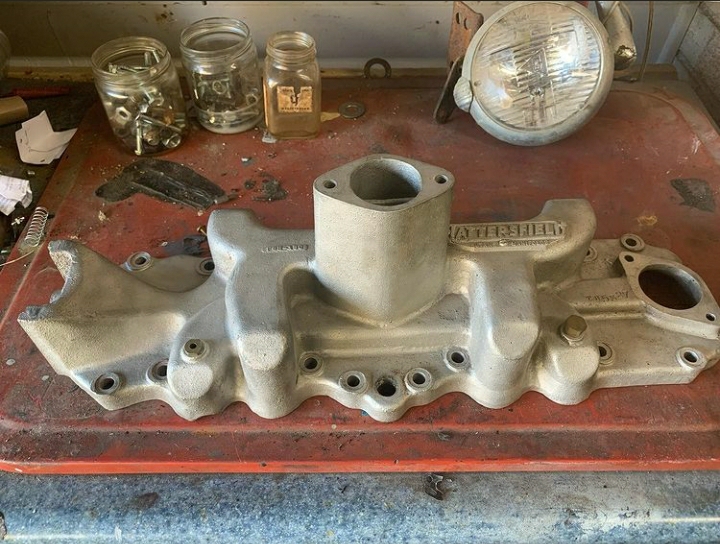

Status: No longer in production
This intake was designed and produced by Tattersfield during WW2. The purpose of this intake was to provide an alternative fuel intake during the scare resources put on gasoline during the war. This intake is designed to mount to a pre-war Flathead and offer the option of butane or propane fuels. After
Thickstun PM-7

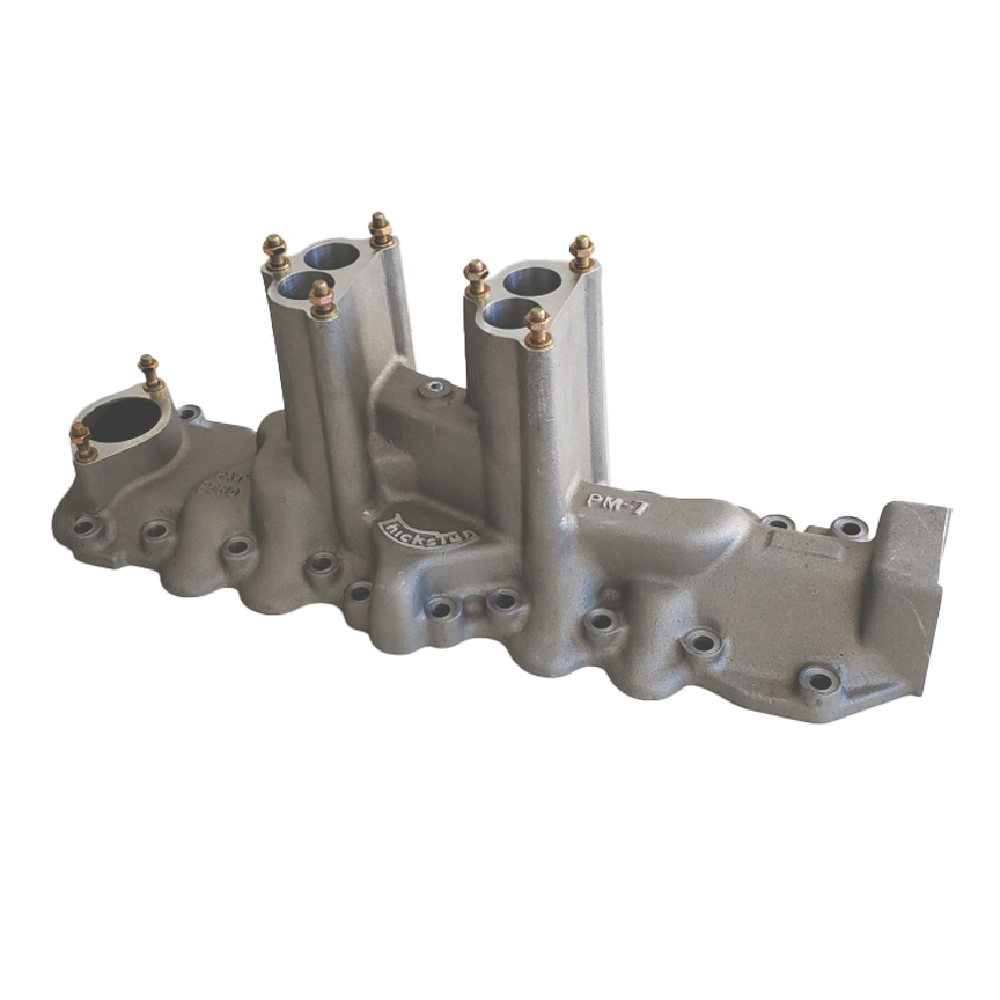
Status: Still in Production Via H&H Flatheads but they don’t seem to be on their website you might have to call them.

Although reproduced until the mid 2010’s this intake was produced originally post war WW2. They came out of the box painted red. Their designation standing for Part Mold – 7 and was the seventh generation design. Although a great intake we rated this one down because so many reproductions de-valued the design and the intake is still being produced today.
Tattersfield Highrise PM-8


Status: Still in production and can be special ordered at H&H Flatheads

Most of what I can find about this intake was that it’s strongly based on the PM-7 and the branding was changed. Not sure if this is an old intake as I can’t find any information and the intakes look and is available new. It’s likely a PM-7 with a branding change.
Tattersfield-Baron 4×2 Intake
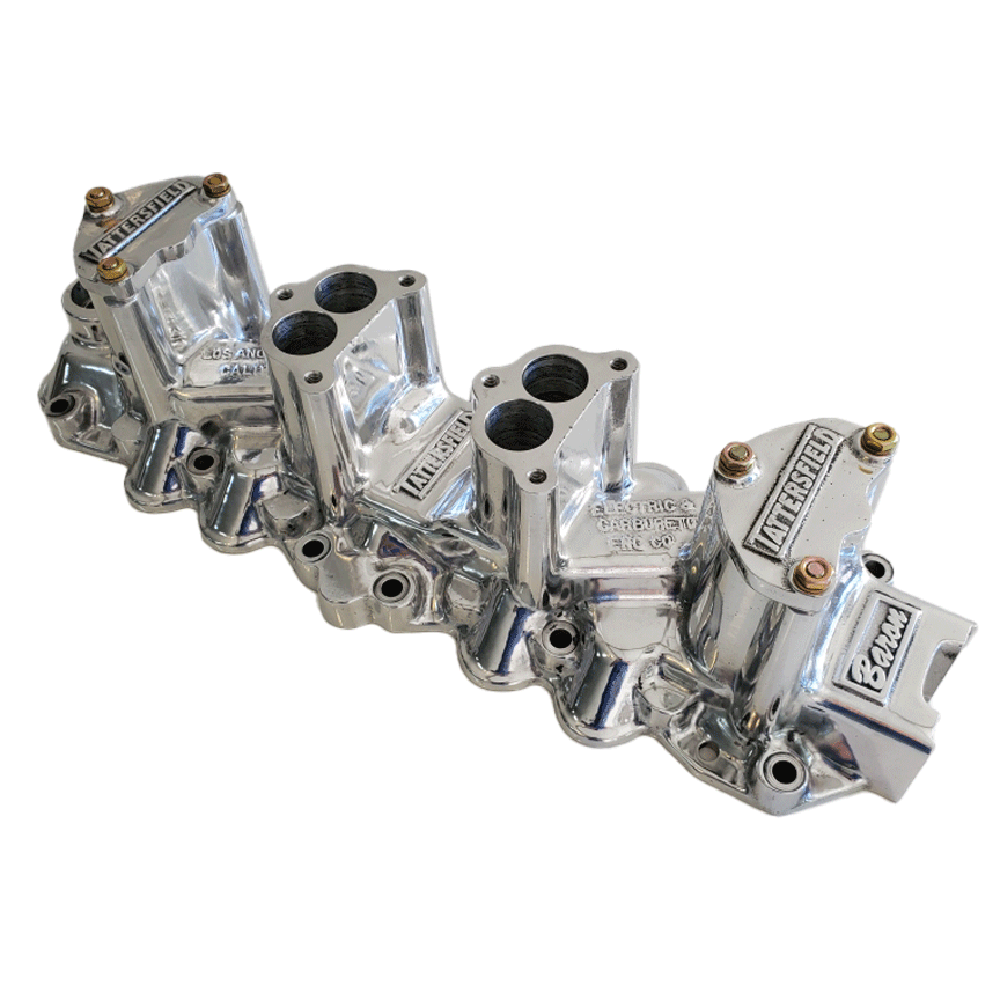

Status: Still in Production and being produced by Barron Racing. I suspect you can also get this intake via H&H Flatheads on special order.

This intake manifold was produced back in the 50’s but continued to be produced up through the 2000’s when Tattersfield seems to have stopped operations. So as most intakes that where produced up until recently we lowered the rarity of the intake. There is rumor that the intake molds have been reworked and might be brought back into production. Just rumor at this point.
Tattersfield 2×2 for Ford Flathead 4
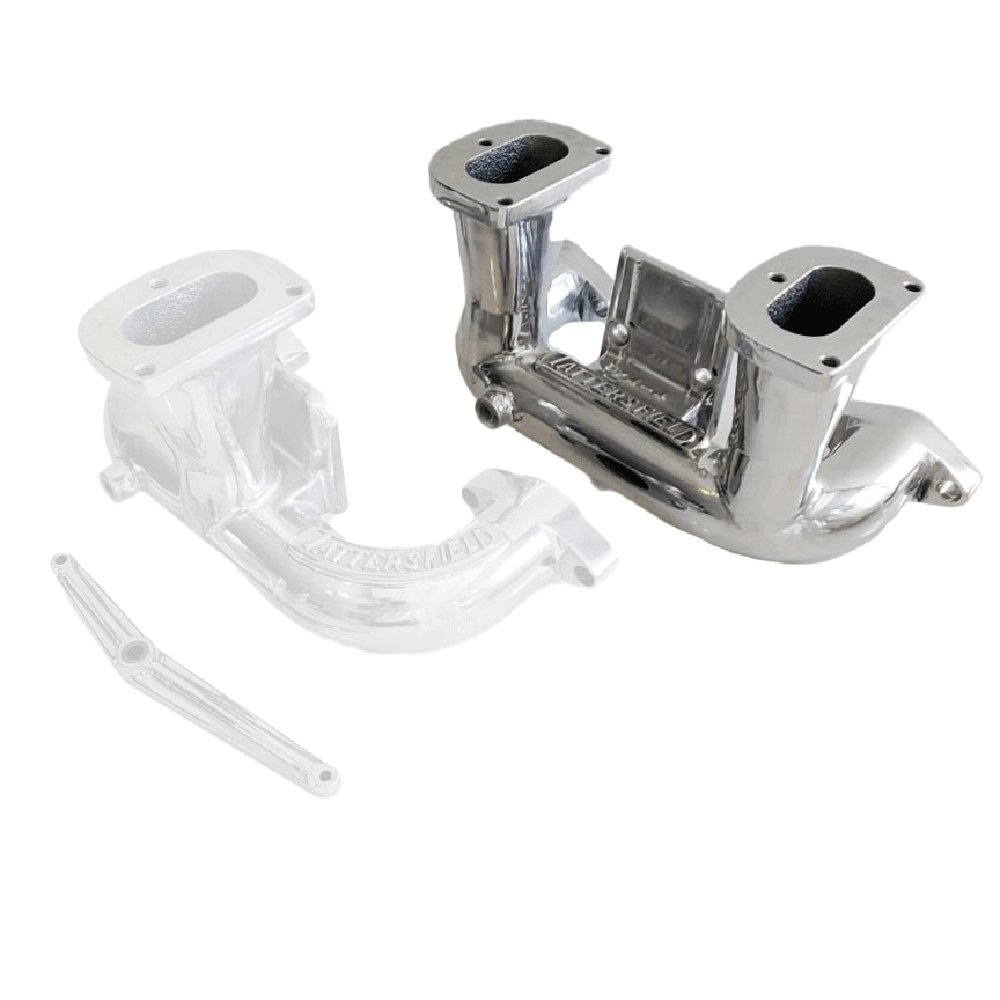

Status: Still in production
Tattersfield 2×1 for Ford Flathead 4


Status: Still in production




